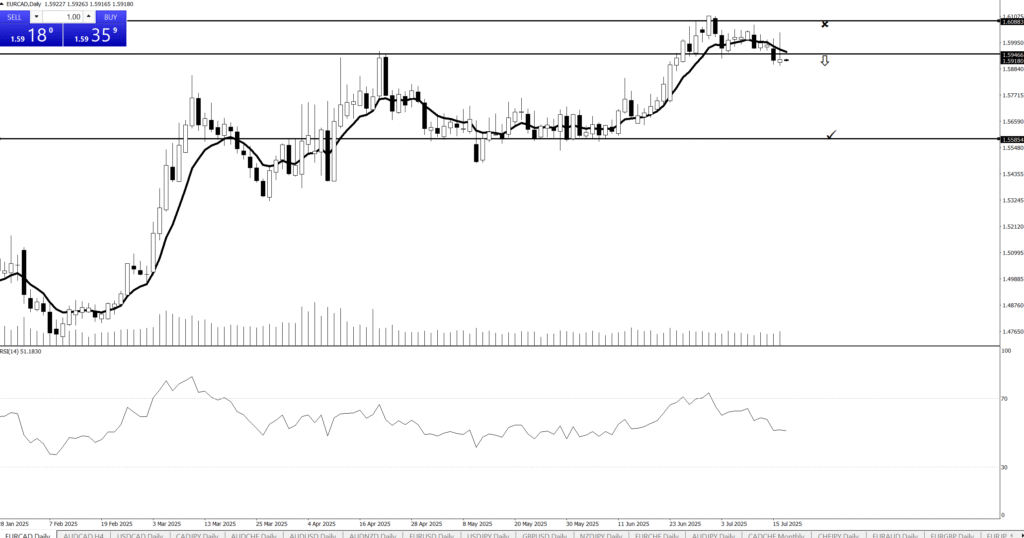22. We Take Trades Based on Daily, Weekly or Monthy

Alright, let’s talk about choosing your chart’s time-travel device: the daily, weekly, or monthly timeframe! Forget those manic 1-minute charts; those are for traders who enjoy drinking espresso straight from the pot and communicating exclusively in expletives. We’re talking about the more civilized timeframes, where you can actually blink.
The Daily Chart (D1): The “Daily Grind” or “Coffee Break” Timeframe
This is your most popular choice for swing traders and anyone who wants to feel like they’re actively trading without needing a defibrillator handy. Each candle is a full day’s worth of market drama.
Why it’s great: It filters out all that annoying intraday “noise” – like when your neighbor’s dog barks every 30 seconds. On the daily, you just see if the dog actually got out and chased the mailman. Trends are clearer, patterns feel more “real,” and you won’t age a decade in an hour. You can still sneak in a few trades a week without sacrificing your sanity or your lunch break.
The downside: You still have to pay attention daily. And your stop-losses might need to be wide enough to encompass a small continent, so don’t get greedy with your position sizing unless you enjoy heart palpitations.
The Weekly Chart (W1): The “Zen Master” Timeframe
If the daily is a coffee break, the weekly is a full-blown meditation retreat. Each candle represents an entire week of market action.
Why it’s great: Oh, the serenity! All that daily market chatter? Poof, gone! The weekly chart shows you the real trends, the ones that move like glaciers – slow, unstoppable, and occasionally carving out entirely new landscapes (or fortunes). Support and resistance levels here are like ancient, unbreakable laws. You literally only have to check it a few times a week, leaving plenty of time for actual hobbies, like knitting or competitive napping. Ideal for those who view trading as a long-term relationship, not a one-night stand.
The Monthly Chart (MN): The “Historian” or “Retirement Planner” Timeframe
This is for the truly evolved, the long-term visionaries, or those who simply forget they even have a trading account for weeks at a time. One candle equals an entire month of price action.
Why it’s great: This chart tells you the epic sagas of the market. You’ll see multi-year trends, once-in-a-decade opportunities, and historical turning points that make you feel like you’re staring at an ancient scroll. Noise? What noise? This chart laughs at “noise.” It’s mostly used by investors planning for their great-grandchildren’s college funds, or by analysts who like to say “Historically speaking…” a lot.
In short, choose your timeframe wisely. It dictates your stress levels, your trading frequency, and whether you need to invest in a faster internet connection or just a really comfy armchair.
💰Quotes:
“Enter the trade — then sit on your hands like a monk!”
“We don’t click and panic. We click and chill.”
“Traders who wait, get paid. Traders who fidget… donate!”
“We enter the trade, then do absolutely nothing like pros.”
“Let the market work. You’re not its boss.”
💰Normal Tone Slogans:
“Enter with a plan, then let the trade play out.”
“The work is in the setup — the result comes with patience.”
“We don’t babysit trades. We trust our edge.”
“Entry is action. Waiting is discipline.”
“After entry, emotion has no place — only patience.”

Alright, let’s get serious (but not too serious, because who needs that kind of stress?) about why some of us prefer the more “mature” timeframes: daily, weekly, or even monthly charts.
Why do we stick to these golden oldies and ignore those hyperactive 1-minute or 5-minute charts?
Avoiding the Market’s ADHD: Those lower timeframes are like watching a toddler on a sugar rush – constant, chaotic movement, and utterly exhausting to keep up with. You blink, and suddenly your perfectly planned trade is upside down. Daily, weekly, or monthly charts? They’re the grown-ups. They move slower, they’re more predictable, and they don’t throw tantrums every five seconds. You actually get to think before you act, which, let’s be honest, is a luxury in trading.
Fewer “Fake Outs” (and Less Therapy): On the smaller timeframes, every little wiggle looks like a trend reversal, and every tiny breakout is a “signal!” You end up chasing ghosts, getting stopped out constantly, and feeling like the market is personally mocking your intelligence. The higher timeframes are less prone to these cruel jokes. When a trend or pattern forms on a daily chart, it’s usually the real deal, not just the market pulling your leg. Less fake outs, less hair pulling, less explaining to your therapist why you keep buying high and selling low.
Reclaiming Your Life (and Your Sleep): Who wants to be glued to a screen 24/7, eyeballs twitching, fueled purely by caffeine and desperation? Not us! Trading higher timeframes means you check the charts a few times a day, or even a few times a week, make your educated decision, and then go live your life. You can eat dinner, sleep, socialize, or even take up a hobby that doesn’t involve staring at flickering numbers. It’s trading for people who still appreciate sunshine and human interaction.
Seeing the “Forest,” Not Just the “Aggressive Squirrel”: Lower timeframes show you every tiny tree, every individual leaf, and every aggressive squirrel trying to steal a nut. But it’s hard to tell if you’re in a growing forest or a dying one. Daily, weekly, and monthly charts give you the majestic, sweeping view of the entire forest. You see the major trends, the big turning points, and you’re less likely to get distracted by that one squirrel’s dramatic antics.
So, while some brave souls thrive in the frantic chaos of micro-timeframes, many of us prefer the calmer, more reliable wisdom of the daily, weekly, or monthly charts. It’s simply less stressful, often more profitable in the long run, and you get to keep your sanity (mostly).
💰Quotes:
“Enter the trade — then sit on your hands like a monk!”
“We don’t click and panic. We click and chill.”
“Traders who wait, get paid. Traders who fidget… donate!”
“We enter the trade, then do absolutely nothing like pros.”
“Let the market work. You’re not its boss.”
💰Normal Tone Slogans:
“Enter with a plan, then let the trade play out.”
“The work is in the setup — the result comes with patience.”
“We don’t babysit trades. We trust our edge.”
“Entry is action. Waiting is discipline.”
“After entry, emotion has no place — only patience.”
